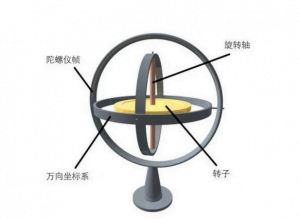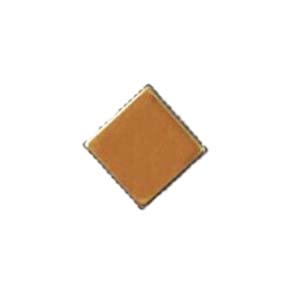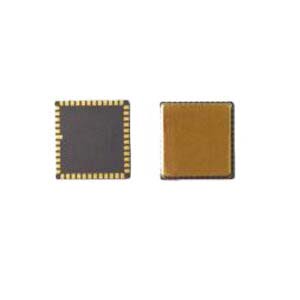MEMS gyroscope is a sensor that measures the angular velocity of rotation. Its working principle is to use the law of conservation of angular momentum to measure the vibration state of the mass block inside the device in different directions, so as to measure the turning angular speed of the device in space. When the sensor turns, the mass block will undergo a vibration that deflects in a certain direction. This vibration will cause the corresponding voltage signal on the induction electrode to output the rotational angular speed. During rotation, the detection circuit measures the voltage signal on the electrode and converts it into an angular velocity output. MEMS gyroscope has the characteristics of fast response speed, high precision, compact structure and high reliability, and is widely used in aircraft, missiles, UAVS, automobile stability system, motion control and other fields.
MEMS (Micro-Electro-Mechanical Systems) refers to a complete micro-electromechanical system that integrates mechanical elements, micro-sensors, micro-actuators, as well as signal processing and control circuits, interface circuits, communications and power supplies. The vast majority of MEMS gyroscopes rely on alternating Coriolis forces caused by mutually orthogonal vibrations and rotations.
MEMS gyroscopes are the most common application of the Coriolis force. MEMS gyroscopes use the Coriolis force (the tangential force experienced by a rotating object when it moves radially). The rotating gyroscope can respond to various forms of The linear motion is reflected, and the motion can be measured and controlled by recording the Coriolis force on the gyroscope components. In order to generate this force, MEMS gyroscopes are usually equipped with movable capacitive plates in two directions. "The radial capacitive plate applies an oscillating voltage to force the object to move radially, and the lateral capacitive plate measures the band due to the transverse Coriolis motion. In this way, the "gyroscope object" in the MEMS gyroscope will continuously move back and forth radially or oscillate under the drive, thereby simulating the movement of the Coriolis force that constantly changes back and forth in the lateral direction. , and can make a slight oscillation in the lateral direction with a difference of 90° from the driving force. This Coriolis force is like the angular velocity, so the angular velocity of the MEMS gyroscope can be calculated from the change in capacitance.

The three-axis gyroscope can measure the position, movement trajectory and acceleration in 6 directions at the same time. The single-axis can only measure the quantity in one direction, that is, a system needs three gyroscopes, and one of the three-axis can replace the three single-axis. The 3-axis is small in size, light in weight, simple in structure and good in reliability. The biggest function of the three-axis gyroscope is to "measure the angular velocity to determine the motion state of the object, so it is also called a motion sensor". In other words, this thing can let our devices know where we are and where we are going.
Performance parameter
The important parameters of MEMS gyroscope include: resolution, zero angular velocity output (zero output), sensitivity and measurement range. These parameters are important indicators to judge the performance of MEMS gyroscopes, and also determine the application environment of gyroscopes.
The resolution is the minimum angular velocity that the gyroscope can detect, and this parameter and the zero angular velocity output are actually determined by the gyroscope's white noise. These three parameters mainly explain the internal performance and anti-interference ability of the gyroscope.For the user, the sensitivity has more practical selection significance. The measuring range refers to the maximum angular velocity that the gyroscope can measure. Different applications have different requirements for various performance indicators of gyroscopes.
More Technical Questions
1.How accurate is MEMS gyroscope?
2.Where are MEMS Gyroscopes Used?
3.How to select MEMS gyroscope?
4.How to Distinguish MEMS Accelerometer and MEMS Gyroscope Correctly?
5.MEMS gyroscope VS FOG: What’s the difference between them?
6.Analysis of Typical Applications of MEMS Sensors
Products in Article

.jpg)





